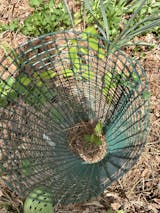
Autumn Brilliance Juneberry
Click here for Juneberry Care Guide
Amelanchier grandiflora - Autumn Brilliance Juneberry
Autumn Brilliance Juneberry is an easy-to-grow native tree that adapts to a wide range of soils and climates. Its fruits, about half an inch in diameter, are sweet and pleasant when picked fresh. Also known as serviceberry, this tree blooms early in spring with a mass of white flowers and produces clusters of blueberry-like fruits in June. In the fall, the small tree turns a vivid red. There's usually more than enough fruit for preservation and later use.
Zones: 3-8
Spacing: 15' circle
Plant Characteristics:
- Pest Resistance: Excellent
- Disease Resistance: Good
- Drought Tolerance: Good
- Heat Tolerance: Very Good
- Humidity Tolerance: Very Good
- Sun Tolerance: Excellent
- Wet Soil Tolerance: Fair
- Shade Tolerance: Good
- No Spray: Very Good
- Salt Tolerance: Fair
- Fresh for Kids: Very Good
- Deer Resistance: Good
- Thorns: No
- Plant Type: Tree
- Soil Type: Adaptable
- Edible Type: Fruit
- Self-Fertile: Yes
This information is accurate to the best of our knowledge. Comments and opinions are always welcome.

